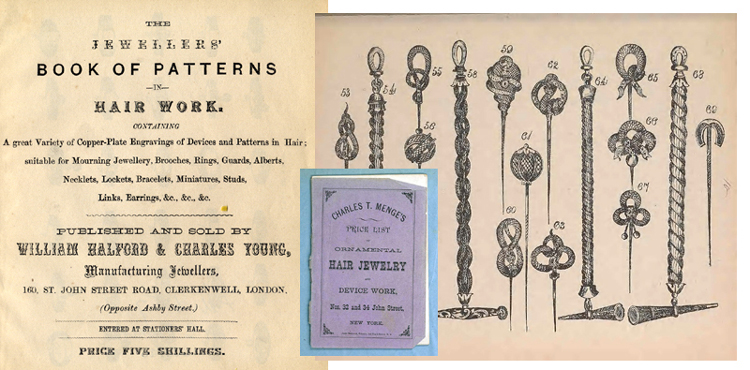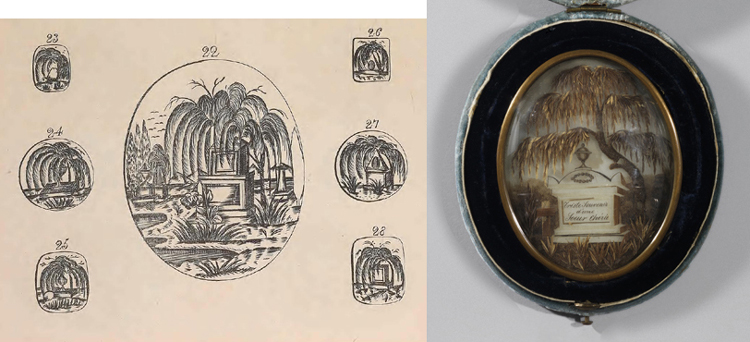The Cooper-Hewitt National Design Library owns many types of pattern books for architecture, textiles, wall coverings, and ornament for use by designers. Among our more unusual “how to” pattern books and trade catalogs are two recently digitized hair jewelry pattern books – The jewellers’ book of patterns in hair work and Charles T. Menge’s price list of ornamental hair jewelry and device work.
![(L:) Charles T. Menge's price list of ornamental hair jewelry and device work, nos. 32 and 34 John Street, New York. Charles T. Menge, [ca . 1873] q NK6076 .C43 1873 Smithsonian Libraries. (R:) Pair of earrings, Probably United States, c. 1860 -70. Hair, gold. Cooper-Hewitt, National Design Museum, Smithsonian Institution.Gift of Mrs. Gustav E. Kissel, 1928-5-58-a,b](https://blog.library.si.edu/wp-content/uploads/2014/06/MengeEarringsDuo.jpg)
During the Victorian era, having jewelry made from the hair of deceased loved ones was a way of literally keeping the person with you always, even after death; it is the one of the most enduring and intimate of human relics. Hair was fashioned into a piece that was braided, woven or otherwise worked into a form and a design. Brooches, bracelets, earrings, watch fobs, and rings could be made from hair.

Not all hair jewelry was mourning jewelry; they could be could be made and given as tokens of affection and sentimental gifts between friends, keepsakes of your children, siblings or parents. Or they could be more intimate, private exchanges between lovers. 19th century periodicals such as Godey’s Lady’s Book and other types of fancywork instructional manuals told you how to make your own hair jewelry- a labor of love for sure. If this was too much of a challenge, you could have an item custom made for you by a jeweler or specialist in hair jewelry and have it made professionally. You could pick a design from pattern books and catalogues like these; all you had to provide was the hair.

Companies like Halford & Young and Charles T. Menge’s would make the jewelry, providing the types of findings (component parts such as clasps, ear wires, pins, chains, etc.) that you selected from the catalogue. It was exciting to study the museum’s hair jewelry collection and connect them to some original design sources in our pattern books. You can read more about hair jewelry and the museum’s hair jewelry collection.

One Comment
[…] Cooper-Hewitt Design Library has digitized a couple of Victorian hair jewelry how-to books. So tempted to hire someone to make something for me from the books. Is that […]